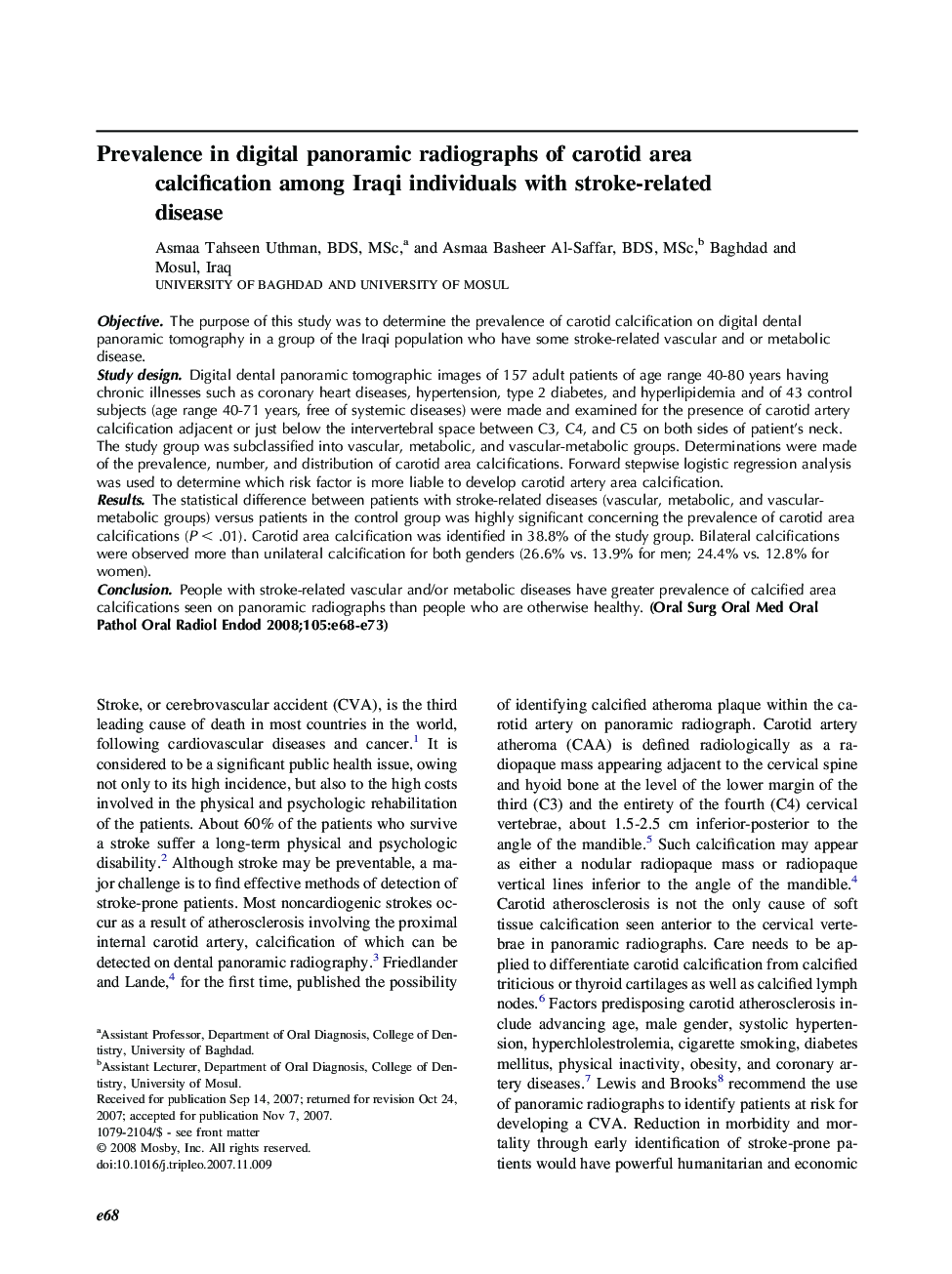| Article ID | Journal | Published Year | Pages | File Type |
|---|---|---|---|---|
| 3168864 | Oral Surgery, Oral Medicine, Oral Pathology, Oral Radiology, and Endodontology | 2008 | 6 Pages |
ObjectiveThe purpose of this study was to determine the prevalence of carotid calcification on digital dental panoramic tomography in a group of the Iraqi population who have some stroke-related vascular and or metabolic disease.Study designDigital dental panoramic tomographic images of 157 adult patients of age range 40-80 years having chronic illnesses such as coronary heart diseases, hypertension, type 2 diabetes, and hyperlipidemia and of 43 control subjects (age range 40-71 years, free of systemic diseases) were made and examined for the presence of carotid artery calcification adjacent or just below the intervertebral space between C3, C4, and C5 on both sides of patient’s neck. The study group was subclassified into vascular, metabolic, and vascular-metabolic groups. Determinations were made of the prevalence, number, and distribution of carotid area calcifications. Forward stepwise logistic regression analysis was used to determine which risk factor is more liable to develop carotid artery area calcification.ResultsThe statistical difference between patients with stroke-related diseases (vascular, metabolic, and vascular-metabolic groups) versus patients in the control group was highly significant concerning the prevalence of carotid area calcifications (P < .01). Carotid area calcification was identified in 38.8% of the study group. Bilateral calcifications were observed more than unilateral calcification for both genders (26.6% vs. 13.9% for men; 24.4% vs. 12.8% for women).ConclusionPeople with stroke-related vascular and/or metabolic diseases have greater prevalence of calcified area calcifications seen on panoramic radiographs than people who are otherwise healthy.
